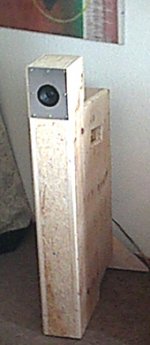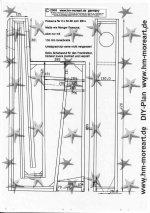Hello,
the listeners feedback is a cause to
make the plan for free download:
Trombone
best soundstage, cheap, small, enough SPL.
http://www.hm-moreart.de/24.htm
http://www.hm-moreart.de/88.htm
the listeners feedback is a cause to
make the plan for free download:
Trombone
best soundstage, cheap, small, enough SPL.
http://www.hm-moreart.de/24.htm
http://www.hm-moreart.de/88.htm
Attachments
larkinrulez
look the Posaune
http://www.hm-moreart.de/25.htm
for 6,5 driver or Manger,
http://www.hm-moreart.de/25.htm
and the last plan page you find
a Posaune for 4" driver.
I built it after the Saxophon to hear what is
possible, the Trombone ist the smallest
fullrange horn with the cheapest price
and best soundstage I ever built.
2 x 4" page
look the Posaune
http://www.hm-moreart.de/25.htm
for 6,5 driver or Manger,
http://www.hm-moreart.de/25.htm
and the last plan page you find
a Posaune for 4" driver.
I built it after the Saxophon to hear what is
possible, the Trombone ist the smallest
fullrange horn with the cheapest price
and best soundstage I ever built.
2 x 4" page
Attachments
Bi-pol,
when you use the back driver invers change the pol.
You might get a better K2 in the bass and less HT effect
over ~1000 Hz (the end of the speaker invers) because
it stands near a wall, so HT reflection not wanted.
The distance between the driver is smaller than
between your ears, it is like one driver.
when you use the back driver invers change the pol.
You might get a better K2 in the bass and less HT effect
over ~1000 Hz (the end of the speaker invers) because
it stands near a wall, so HT reflection not wanted.
The distance between the driver is smaller than
between your ears, it is like one driver.
sorry,
there is much to tell, to much for my English.
look the single simulation of the membranmovement,
how looks the complet system movement?
I think the movement turn to an average, if so
its a kind of revolution, because everything gets better
by lower movement. and what happens at 40 Hz
the back driver moves more but it can because it
has a horn optimum, low movement
The single simulation shows nothing below 70 Hz
but you get 38 Hz.
There a some facts, like 4 horn mouth, 90°,
horn mouth distance, impedanz etc.
the alphorn instrument, to much to write.
I asked Mr. Dicks (DDD) and Mr. Keller (AER)
but no explanation is real found.
It happens
look also the Saxophon and Posaune
there is much to tell, to much for my English.
look the single simulation of the membranmovement,
how looks the complet system movement?
I think the movement turn to an average, if so
its a kind of revolution, because everything gets better
by lower movement. and what happens at 40 Hz
the back driver moves more but it can because it
has a horn optimum, low movement
The single simulation shows nothing below 70 Hz
but you get 38 Hz.
There a some facts, like 4 horn mouth, 90°,
horn mouth distance, impedanz etc.
the alphorn instrument, to much to write.
I asked Mr. Dicks (DDD) and Mr. Keller (AER)
but no explanation is real found.
It happens
look also the Saxophon and Posaune
The best bass explanation ist found:
Double horn explanation:
Building of organs
This phenomenon is used for a long time in the building of
organs:
With simultaneous employment of the 8-foot and the 51/3-foot,
which lie a Quinte over it, one hears the 16-foot, thus a Oktave
under the 8-foot. Thus a missing basic clay/tone can be simulated,
in which two clay/tone producers on the Oktave and the pure
Duodezime ring out at the same time to material the missing basic
clay/tone. With the organ will so e.g. 32 ' - registers saved, in which (preferably open) 16 ' - Labialregister with (covered) a 102/3' a Labialregister one combines.
Double horn explanation:
Building of organs
This phenomenon is used for a long time in the building of
organs:
With simultaneous employment of the 8-foot and the 51/3-foot,
which lie a Quinte over it, one hears the 16-foot, thus a Oktave
under the 8-foot. Thus a missing basic clay/tone can be simulated,
in which two clay/tone producers on the Oktave and the pure
Duodezime ring out at the same time to material the missing basic
clay/tone. With the organ will so e.g. 32 ' - registers saved, in which (preferably open) 16 ' - Labialregister with (covered) a 102/3' a Labialregister one combines.
What about spatial experience (localisation) of DDD? I wondering why simple recording technique would fail - take 3-4m separated omni mic and reproduce by using omni transducer in the same manner in playback room. According to Dave Moulton the reflections from side walls shouldn't aggravate the spatial and timbre impression. Back wall should be damped (broadband).
As a horn designer have you ever tried phasing plugs for full range cone drivers?
As a horn designer have you ever tried phasing plugs for full range cone drivers?
Hello,
the DDD has a superb soundstage,
the Trombone is near but not the same.
The effect you mentioned is more an
effect of ear brain management,
first wave front and Haas effect.
sorry I am not a speaker designer,
but Audio Nirvana shows with e.g
the 8" what happend, see measurements.
the DDD has a superb soundstage,
the Trombone is near but not the same.
The effect you mentioned is more an
effect of ear brain management,
first wave front and Haas effect.
sorry I am not a speaker designer,
but Audio Nirvana shows with e.g
the 8" what happend, see measurements.
- Status
- This old topic is closed. If you want to reopen this topic, contact a moderator using the "Report Post" button.
- Home
- Loudspeakers
- Full Range
- horn for two 3" driver

